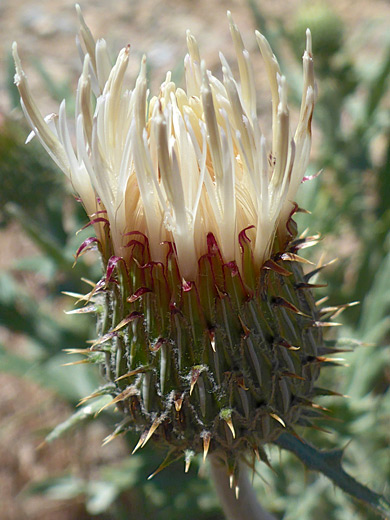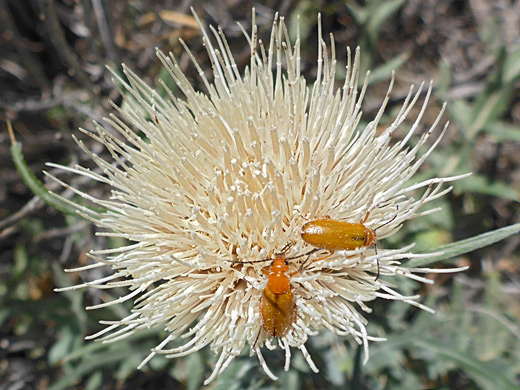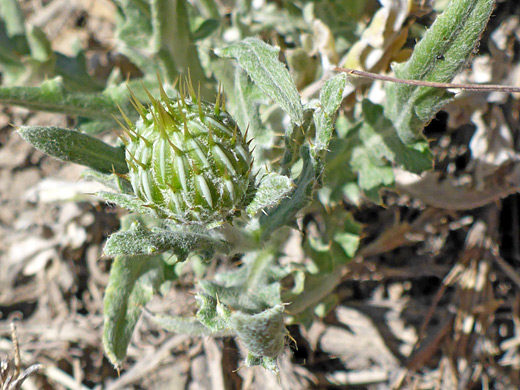Common name:
Prairie thistle
Family:
Scientific name:
Cirsium canescens
Main flower color:
Range:
The south and central Rocky Mountains, and parts of the Great Plains. Introduced to northeast California
Height:
Up to 4 feet
Habitat:
Meadows, prairie, grassy slopes, disturbed ground; up to 12,000 feet
Leaves:
Narrowly obovate to oblong, up to 12 inches long, toothed or lobed, spiny, with a tomentose hair covering
Season:
May to August
Cirsium canescens belongs to a subgroup of thistles for which the phyllaries are crossed by a narrow, lengthwise, glutinous, milky white ridge; this is broadest for the lower phyllaries, becoming narrower, and longer, on the upper phyllaries. Phyllaries are tipped with flattened spines, brown or purplish, usually spreading outwards. Phyllary margins are lined with cobwebby hairs. The involucre is narrowly bell-shaped; flattened at the base, and slightly constricted at the top, below the florets, which are off-white in color, sometimes tinged with pale purple. Florets are up to 1.4 inches long. Flowerheads are held in loose clusters of up to ten.
The tall stems are densely covered with greyish hairs, generally unbranched. Leaves are lined with well-separated teeth, or lobes, spine-tipped, and they also have a covering of cobwebby tomentose hairs, on both surfaces but more densely underneath.
The tall stems are densely covered with greyish hairs, generally unbranched. Leaves are lined with well-separated teeth, or lobes, spine-tipped, and they also have a covering of cobwebby tomentose hairs, on both surfaces but more densely underneath.
All Contents © Copyright The American Southwest | Comments and Questions | Contribute | Site Map





